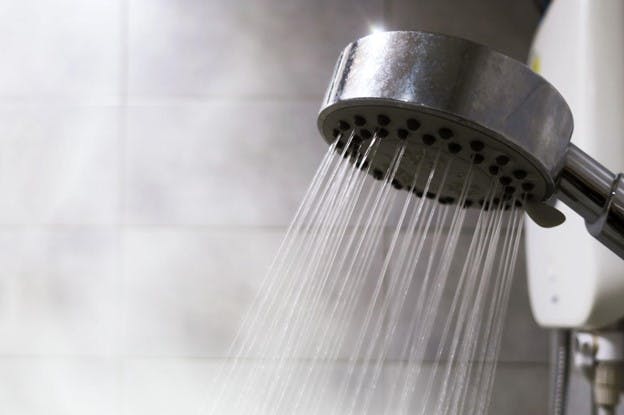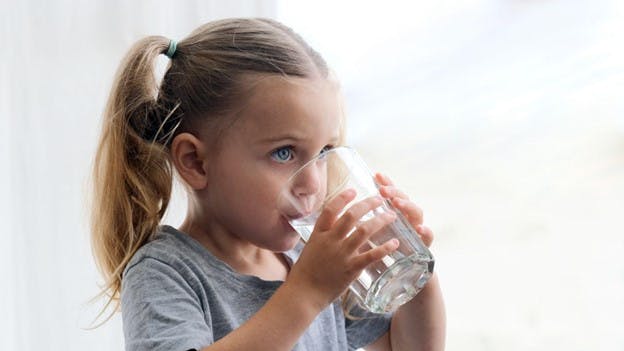July 2023
What Are Trihalomethanes? The Science Behind Filtering It Out of Water
Before water chlorination, it was common to contract waterborne illnesses from drinking water. Illness, infections, and even deaths from drinking contaminated water were something that plagued mankind. Some civilizations even turned to drinking beer instead of water because it was safer.
In the 20th century we discovered that adding just a small amount of chlorine could make water safer for everyone. The importance of this discovery only grew as massive public water systems were created. A single public water system could now serve hundreds of thousands or even millions of people. Chlorine has undoubtedly saved millions of lives and prevented illnesses like cholera and typhoid fever. It’s often considered one of the most important discoveries in public health, sanitation, and increasing lifespans.
That doesn’t mean it’s without downsides, though.
Besides that familiar public pool taste and odor that may come from your tap, another problem we’re constantly learning more about is disinfection byproducts like haloacetic acids and trihalomethanes (THMs). The more we learn about these, the more some scientists think there’s reason for concern.
So, what are trihalomethanes, how do they form, and why should we be concerned about them? These are all questions we’re going to answer for you.
What Are Trihalomethanes?
Trihalomethanes are colorless liquid byproducts of water treatment that have a slight chlorine-like scent. They are formed when chlorine and chloramines interact with organic matter in water supplies. THMs are in a class of contaminants called disinfection byproducts.
The tri- in trihalomethanes comes from the fact that they each have three halogen molecules: chlorine, bromine, and or a combination of chlorine and bromine.
The most common trihalomethanes are chloroform, bromoform, bromodichloromethane, and dibromochloromethane. When measured together, these four are known as the total trihalomethanes (TTHMs). Total THMs are known to cause acute health problems when we encounter them in high concentrations. Perhaps more concerning are the long-term effects that can happen when we encounter them in lower concentrations over a long period of time.
Exposure to these chemical compounds can happen in many different ways.
How Do Trihalomethanes Get into Drinking Water?
Drinking water from municipal water systems is processed at a water treatment plant. The job of these treatment plants can change depending on the water they are treating but their primary purpose is to filter and disinfect water so it’s safe to drink and cook with.
One of the most common ways to disinfect water is through a process of chlorination or chloramination. There are primary treatments and even secondary treatments of the water with these chemicals as it travels through the pipes on the way to customers' homes and businesses.
As these disinfecting chemicals interact with organic material in the water, THMs and other disinfection byproducts can form and be carried on straight to your faucet.
Of course this can also happen if you have well water that you treat with chlorine or chloramines. This is one of many reasons it is recommended that you filter your water before you drink it, cook with it, or shower in it.
How Are People Exposed to Trihalomethanes?
We can be exposed to trihalomethanes by ingesting them, absorbing them through the skin, and inhaling them. Let’s take a look at common ways this happens:
- Drinking water: Unless you’re filtering your water at home, these disinfection byproducts will end up in your glass.
- Skin absorption: Absorption through your skin happens when you come in contact with water containing THMs — think showering, bathing, swimming in chlorinated pools, or washing dishes. Hot water may make you more susceptible to absorbing higher amounts. It also causes steam, which can lead to more exposure through inhalation.
- Inhalation: When THMs end up in steam or just evaporate off the surface of water we can inhale it. When water contaminated by trihalomethanes is exposed to air, THMs evaporate off the surface pretty quickly. Once in the air they can take a long time to break down. This leaves you susceptible to inhaling THMs any time you're close to chlorinated water.
What Effects Do Trihalomethanes Have on Humans?
THMs and other disinfection byproducts are known to have negative health effects in humans. The primary issue is that THMs may be carcinogens and neurotoxins in high doses.
When a person is exposed to even small amounts consistently over time, there is a risk of skin, bladder, and colon cancer. In larger amounts they can cause more immediate problems like birth defects, reproduction issues, and kidney and liver damage. There is also a risk to the central nervous system. This makes THMs particularly dangerous to young children and pregnant women.
Are TTHMs Regulated by the U.S. Environmental Protection Agency?
Yes. The EPA limits the levels of total trihalomethanes and HAA5 in tap water.
Under the Safe Drinking Water Act, the U.S. EPA regulates 90 primary contaminants found in public water systems across the U.S. Included in those are total trihalomethanes and HAA5. The legal limit for TTHMs in U.S. public water systems is 80 parts per billion (ppb) but some scientists believe that amount is way too high for safety.
The Environment Working Group (EWG) says TTHMs should not exceed 0.15 ppb in order to minimize health problems like bladder and skin cancer. The EWG reports that over 32,000 U.S. public utilities have levels above what’s recommended. These utilities serve over 295 million people in the U.S. today.
What Are Trihalomethanes Doing to the Environment?
We know a little about what effects disinfection byproducts have on human health, but what are trihalomethanes doing to aquatic environments and air pollution?
Surface and groundwater can be contaminated by TTHMs when sewage and wastewater are treated with chlorine before being dumped back into rivers and reservoirs. However, TTHMs don’t build up in aquatic environments, plants, or fish.
Usually over time, surface water systems like lakes, rivers, and streams end up with less TTHMs than groundwater because they can evaporate off the surface of the water. But this means they enter the air, where they will spend some time as air pollution.
Are TTHMs Found in Surface Water Systems or Groundwater Systems?
Because surface water systems allow THMs to evaporate, surface water typically has lower levels of THMs than groundwater sources of water. However, surface water usually contains more organic compounds than ground water. This means facilities that use a surface water source will create more THMS during treatment than those who use groundwater.
Do Water Filters Remove Trihalomethanes?
Yes. Most water filters will reduce or remove trihalomethanes. If you have concerns about TTHMs and other disinfection byproducts like HAA5, a high-quality activated carbon water filtration system will greatly reduce those as well as any chlorine residue still in your tap water.
All of HomeWater’s filters including our most cost effective EZCHANGE 2-Stage Under Counter Water Filter safely removes disinfection byproducts and more. With two separate activated carbon filters, it removes disinfection byproducts, lead, rust, heavy metals, and so much more.
Do Refrigerator Filters Remove TTHM?
Yes. If your refrigerator filter contains activated carbon, there is a good chance it will at least reduce disinfection byproducts and chlorine. This will not only make your water safer to drink but taste better too. Just remember to perform regular maintenance on your refrigerator filters.
Does Bottled Water Contain Trihalomethanes?
That depends on the bottled water and how it's filtered and treated. In general, if a contaminant is common in tap water, it should also be considered common in bottled water.
While bottled water is regulated by the Food and Drug Administration (FDA) and tap water by the Environmental Protection Agency (EPA), the FDA takes their cues from the EPA. Most bottled water is from similar sources as tap water and the treatment processes and legal safety standards are pretty close to identical in most cases.
In fact, the only thing that’s different is the cost. Bottled water can be hundreds or thousands of times more expensive for the same product.
You Can Remove Trihalomethanes From Your Tap Water
Chlorine in public water systems is a modern miracle. The wide variety of waterborne illnesses it prevents, such as cholera and typhoid fever, have allowed us to almost double the life expectancy for modern humans. While chlorine and chloramines are considered safe in the amounts we add them into our water, it's important to understand the answer to "what are trihalomethanes," as these disinfection byproducts do present a danger.
Fortunately, this danger isn’t one you have to bring into your home.
Unlike many chemicals and contaminants found in water today, disinfection byproducts like trihalomethanes are fairly simple to remove with a high-quality activated carbon water filtration system. You can enjoy the benefits of modern water disinfection while easily removing any downside like that swimming pool taste or potential health issues. The same filters that will remove disinfection byproducts will also remove or reduce tons of other common contaminants in your tap water.
For complete home protection from your kitchen sink to your showers, the HomeWater UPSTREAM 4-Stage Whole Home Water Filter is top of its class. This made-in-America filter will not reduce TTHMs and other disinfection byproducts along with particulates, heavy metals, chlorine, VOCs, PFOS/PFAS, and more.
If a whole house water filter system isn’t right for you, try pairing our shower filter with any of our under counter models. This will protect you from chlorine and disinfection byproducts in the areas you use most.


